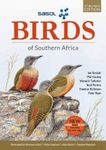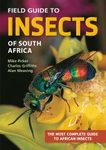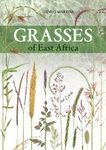By
Gehan de Silva Wijeyeratne
24 Jun 2019
Written for Paperback
It is remarkable that one can have a slim, pocket guide of such a small shape and size which can serve as a truly useful photographic field guide to 397 species of birds. I suppose this is due to two factors. Firstly, it is a testament to the quality available from modern camera equipment and modern printing methods. Secondly, some species groups such as birds, mammals and butterflies lend themselves to having their images being useful if reproduced even at the size of a postage stamp, if the print quality is excellent.
The core of this book encompasses the species accounts which run from pages 14 to 133 in a 144 page book. There is a standard structure with 3 species per page, usually illustrated by one photograph per species, all of which are to the same size. The concise text is focussed on identification and includes a description of calls and distribution. There are no category headings (e.g. Description, Calls, Distribution), probably for reasons of space and it is not needed as the text is brief and follows a standard pattern. Distribution maps are also included for each species indicating where it may be seen. In the first edition of 2017, all of the distribution maps are shaded in green. Perhaps in a future edition a distinction may be made between residents with a year-round distribution and those that are summer visitors during the northern winter. However, the text makes it clear. Some species accounts have an additional image to illustrate a different plumage or to show the bird in flight. This book covers 357 of the 610 species recorded in Namibia. Many people who are on safari in Africa are often interested enough to want to know the commoner or eye-catching species they see, but do not want to carry a heavy field guide with them as they are not world listers. On various visits I have made to Africa, I have often been in the company of such people who would have benefitted from a book like this. In fact, on a recent visit to Zambia, I used the
Pocket Guide Trees of Southern Africa in the same series. Because these books are so lightweight, I kept the tree book in a rather heavy field bag with my optics, camera gear and bulky bird book.
This series which presently has just a few titles is a great idea. The coverage is sufficient for the majority of people with an interest in birds, butterflies, trees etc. but are not trying to tick off the maximum number of species. In fact, for the weight of one of the more comprehensive field guides, once can carry several of the titles in this series. The compact format works so well with species groups such as birds, it should be possible to extend the format for even full coverage of the species recorded in a country like Namibia and still produce a book that is much lighter than what is in the market. The only drawback is that it can then become a book with too many species which can overwhelm those who are trying to get into African birds. On balance, the small size focussing on the commoner birds works really well for a wide audience.
The species accounts are preceded by an introductory chapter of 10 pages which includes a useful vegetation map of Namibia as well as a couple of pages of key habitat types illustrated with pictures. Four pages which include a map describe a handful of Namibia’s key birding sites which comprise some of its best-known national parks. A page of glossary and a feather topography map completes the introductory chapter. The end section is largely the glossary with a few reading references. For the type of user that it is intended, it does not suffer from having slim front and end sections. On the whole, it’s a great little book with good coverage of species, functionally useful, conveniently compact and probably comes across as an easier book with photographs for those who feel a traditional field guide appears too techy. This series clearly meets a requirement in the wildlife tourism market. I can see room for the series to expand covering species groups such as birds, butterflies, mammals and flowers for several countries.
Finally, I would like to digress on a general point about the conservation value of these books. Compact, lightweight, portable and affordable books such as these which cover a manageable number of species are a great way to get people started off inputting a name to what they see and being the foundation for developing a deeper interest. Being relatively inexpensive, they also help with capacity building in developing countries because local guides are more likely to have visitors gifting their used copies to them after a visit. Publishers by necessity need to operate to a commercial model. But as a result, the role they play in capacity building is overlooked because capacity building is typically associated as an activity performed by Environmental NGOs. I was disappointed that the lodges I stayed in on a recent visit to Zambia (many of which were at the mid to high end range), did not have books in this genre available for purchase. Visitors buy them for their own use and sometime buy as gifts for keen locals they meet on holiday. I am sure the absence of wildlife books in lodges, is a reflection of a wider sales and distribution problem which affects many businesses and one I see in many countries I travel in. Birders from countries like the UK are a bit spoilt as we are used to visiting reserves such as those run by the RSPB and WWT and are accustomed to well-stocked bookshelves with relevant titles.
The Pocket Guide to the Birds of Namibia is truly a pocket guide and one which will suit many people with a general interest in wildlife who would like a simple, lightweight book to help them with the commoner birds they see on a wildlife holiday in Namibia.








































